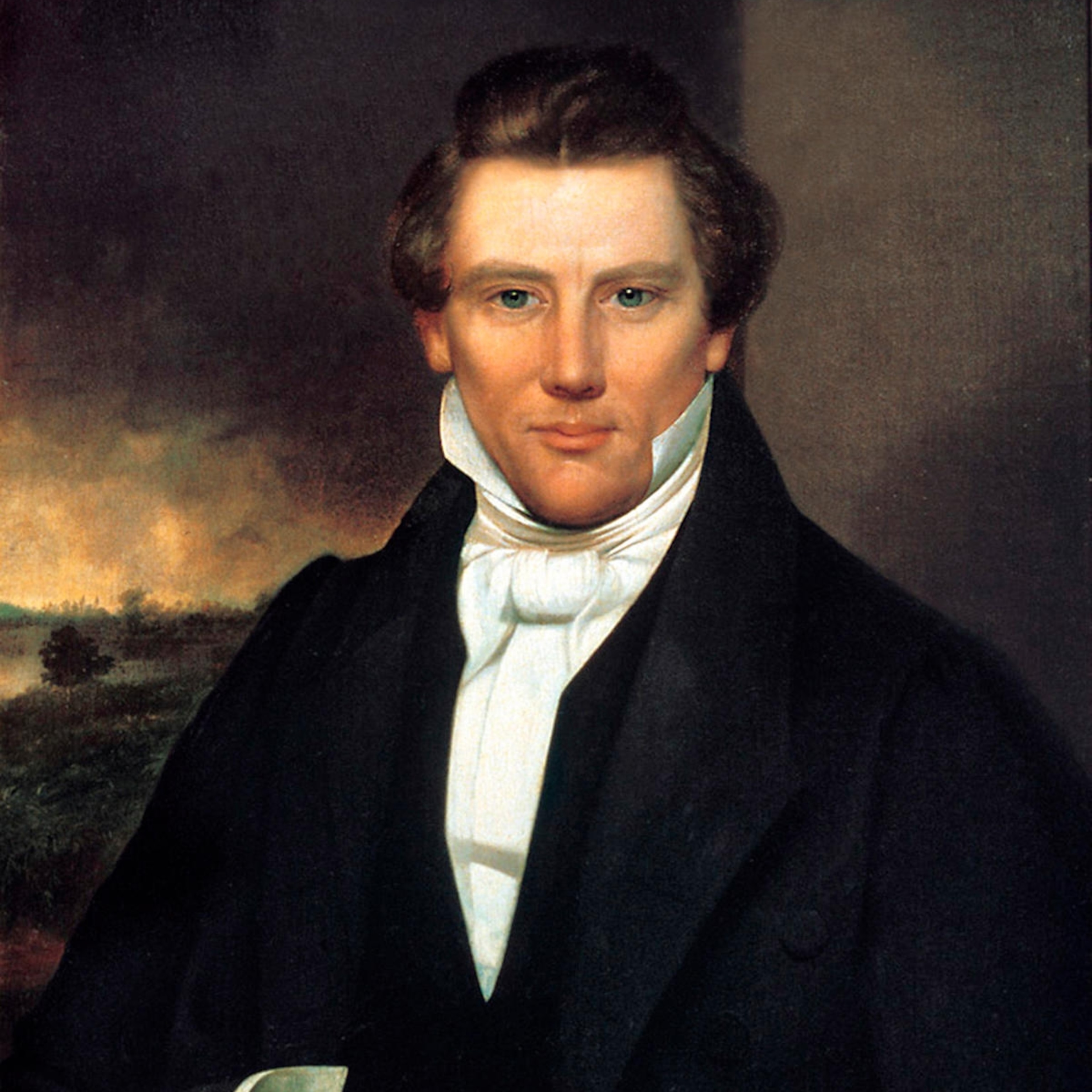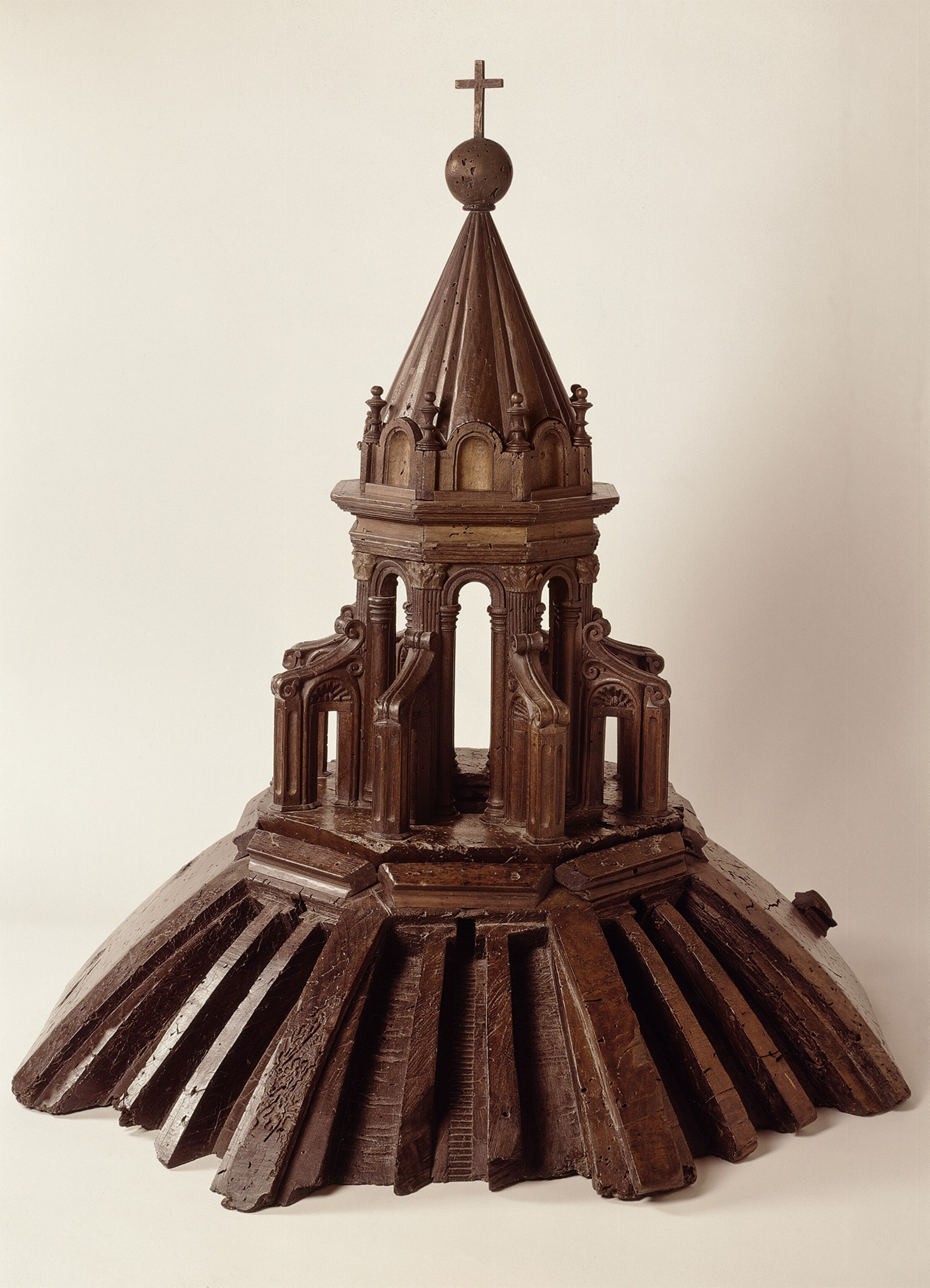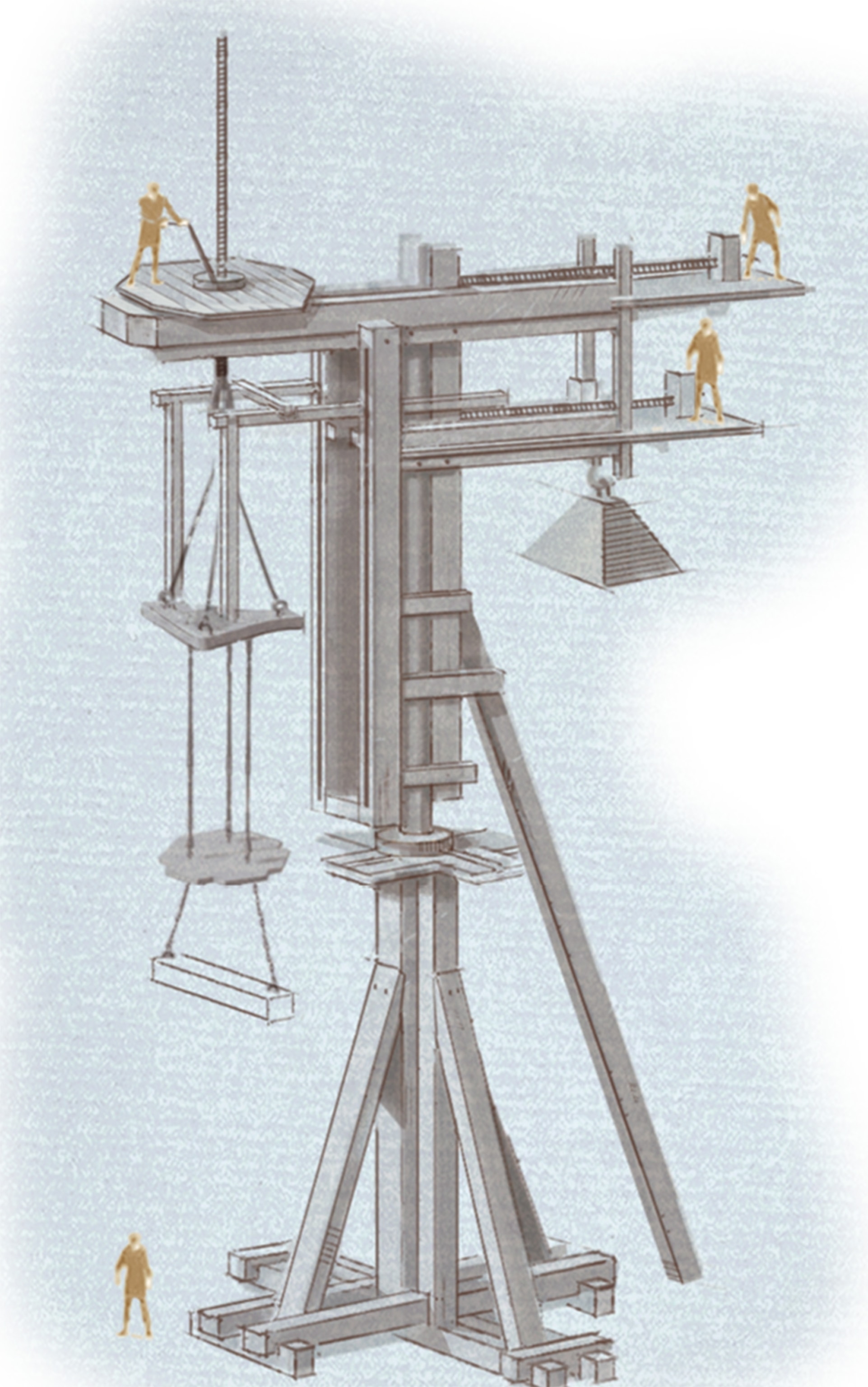
This Renaissance 'superdome' took more than 100 years to build
Florence's Cathedral of Santa Maria del Fiore astonished the world with its colossal dome ingeniously designed by Filippo Brunelleschi.
The Florence Cathedral is, without doubt, one of the great feats of Renaissance engineering. The cathedral is dedicated to Santa Maria del Fiore (St. Mary of the Flower), a reference to the lily, Florence’s emblem. Its iconic and ingenious dome, which architect Filippo Brunelleschi completed in 1436, brought to fruition a project that had begun 140 years earlier.
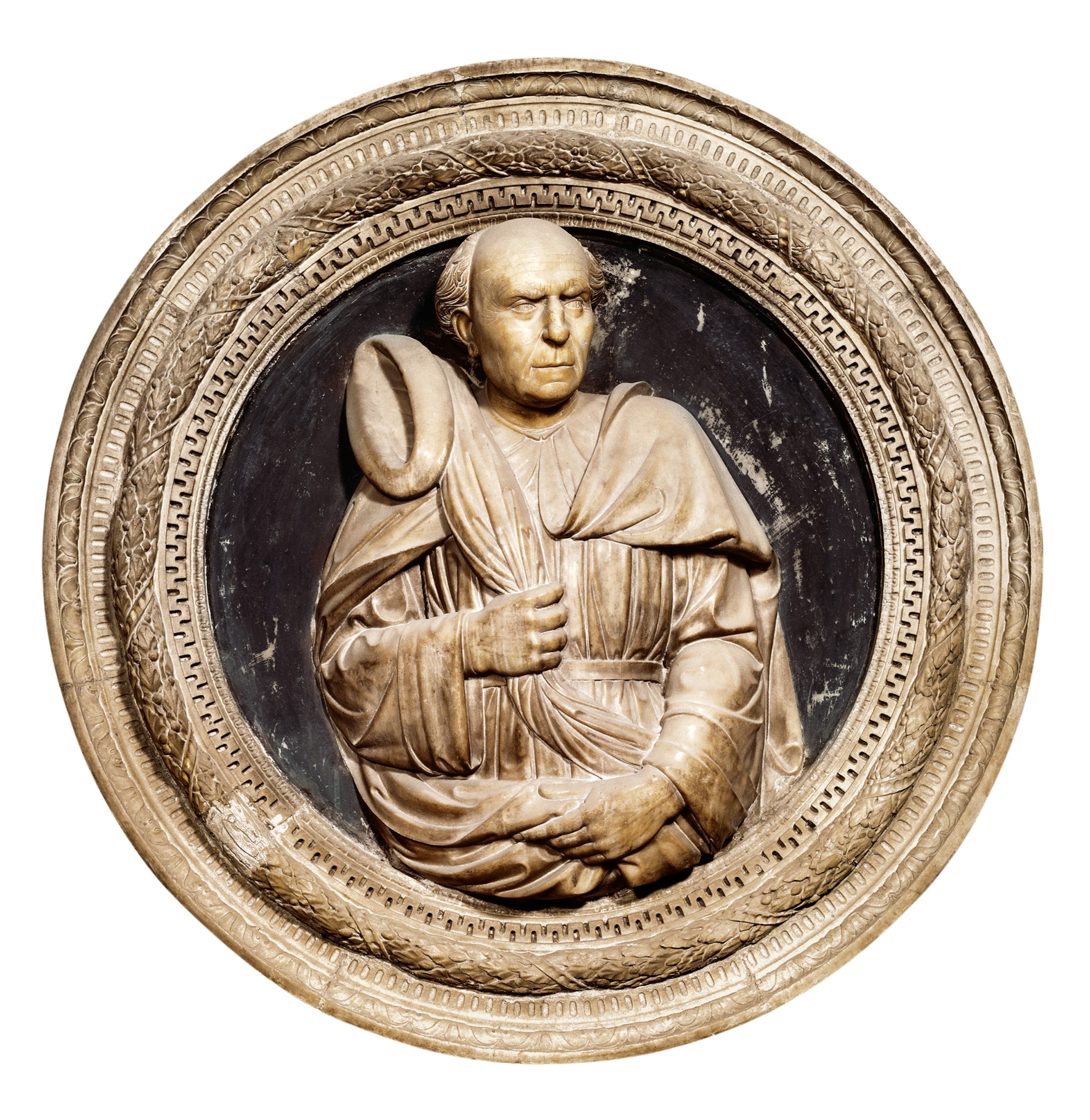
It was sculptor and architect Arnolfo di Cambio who came up with the initial plans for a new cathedral in Florence in 1296, to be built over the existing Cathedral of Santa Reparata, alongside the ancient octagonal baptistery. He worked in the Italian Gothic style, incorporating elements of late Gothic and emerging Renaissance design. But when he died in 1310, work on the cathedral came to a halt.
(Mystery of Florence's Cathedral Dome May Be Solved)
Then, in the 1330s, the Opera del Duomo, the institution in charge of the building works, was taken over by the wool guild, the dominant group in Florentine politics, who put up the funds to continue building the great cathedral. A string of eminent architects filled the role of capomaestro (master builder) in the years to come. The master painter Giotto was appointed to the role in 1334, and began the construction of the freestanding bell tower that now bears his name.
The first great wave of the Black Death hit Florence in 1348, killing between 45 and 75 percent of the population. Construction on the cathedral, overseen in that dark period by the capomaestro Francesco Talenti, stalled once again. By 1355 only the side walls and part of the main facade of the project were anywhere near completion. Talenti extended the main nave, increasing the length of the church to 500 feet, and completed Giotto’s 280-foot-tall bell tower.
(Fast and lethal, the Black Death spread more than a mile per day.)
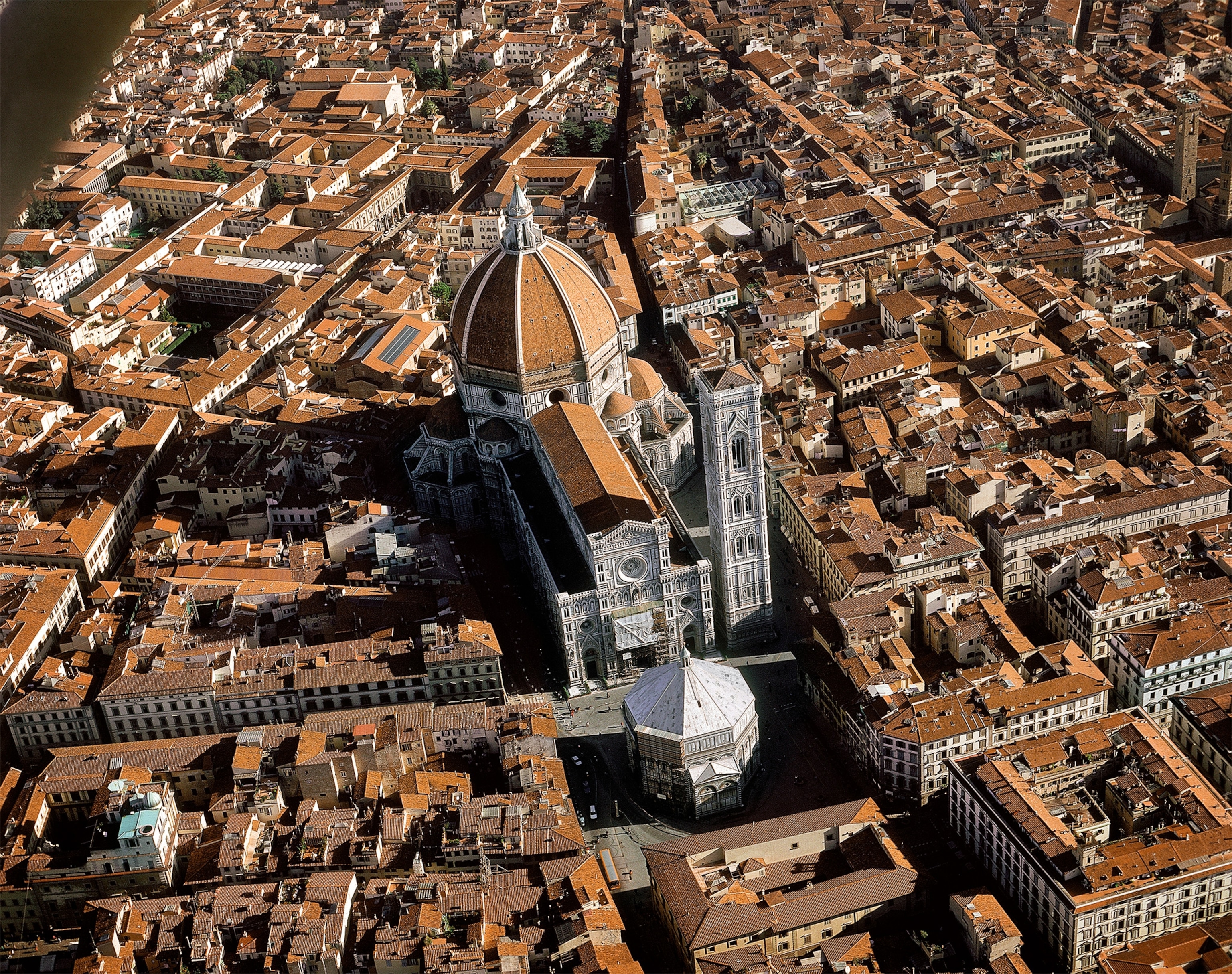
The Persian model
In 1359 or 1360 Giovanni di Lapo Ghini succeeded Talenti as capomaestro. He faced the challenge of designing a dome that could cover the huge transept. Another Italian architect, Neri di Fioravante, came up with a proposal that would avoid external structures such as buttresses: using rings of stone and wood hidden within the dome’s shell. These “chains” would function like iron rings on a barrel, preventing the structure from splitting apart.
Fioravante’s proposal, without Gothic additions, was pitched against the more conservative design proposed by Giovanni di Lapo. In 1367 the Opera del Duomo opted for Fioravante’s idea, but with a caveat: The pillars of the transept would be enlarged, and the dome would increase in diameter to 180 feet. Fioravante rose to the challenge by suggesting a dome with a double shell: a robust inner layer on which a second, lighter skin would rest as protection against the elements. It was the first time that this type of design, originating in Persia and popular in Islamic architecture, had been applied in Europe. Fioravante proposed an octagonal dome with eight stone ribs that would crown the cathedral.
Fioravante suggested a dome with a double shell: a robust inner layer on which a second, lighter skin would rest.
Fioravante created a maquette, or scale model, of his design, which was put on display inside the unfinished cathedral. It became an object of faith that the plan could and would be put into practice. Every year, the Opera del Duomo and its architects swore an oath on the maquette and on the Bible, reaffirming their commitment to complete the dome as specified. No one could doubt their fervent support of Fioravante’s design, but was it feasible? In 1418, once the base of the dome was finished, the Opera del Duomo launched a competition to find an architect who would make the dome a reality.
(The Renaissance 'Prince of Painters' made a big impact in his short life.)
Winning the contest
Known to his friends as “Pippo,” Filippo Brunelleschi was born in Florence in 1377 and spent his childhood in the family home opposite the construction site where the cathedral was gradually taking form. Perhaps growing up in the shadow of the unfinished Santa Maria del Fiore, and seeing Fioravante’s domed maquette inside, inspired Brunelleschi to puzzle out how such an ambitious dome could be built.

Gaining renown as a goldsmith and sculptor, in 1401 Brunelleschi entered an architectural contest to create new doors for Florence’s Baptistery of San Giovanni, the octagonal building that stands alongside the cathedral. The challenge: A set of doors even more magnificent than those designed some 70 years earlier by Andrea Pisano.
On that occasion, Brunelleschi lost to Lorenzo Ghiberti. Defeated, he moved to Rome with his friend Donatello, and for the next 15 years he immersed himself in the study of ancient Roman architecture. It is said that he rediscovered the principles of linear perspective developed by the Greeks and Romans.
(A Roman-era ‘superhighway’ is disappearing. Italy has a plan to save it.)
Top secret
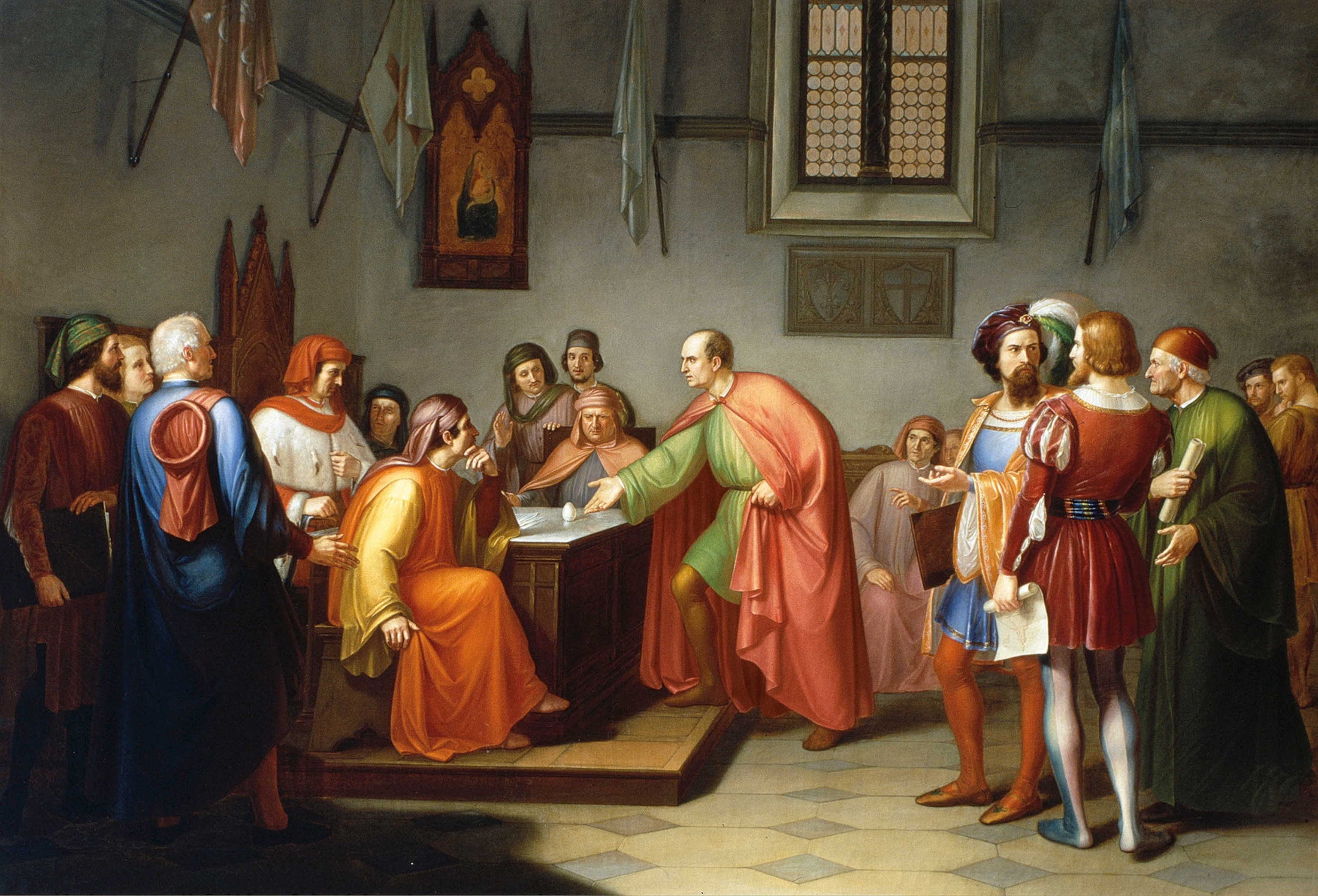
Brunelleschi returned to Florence between 1416 and 1417. When the contest for designing the dome was announced in 1418, Brunelleschi was already one of the favorites, along with his great rival Ghiberti. The proposals that were submitted all had to stick closely to Fioravante’s design. The judges were really looking for a new engineering system to support the huge dome while it was under construction. Some proposals envisaged wooden props supporting the walls of the dome while it was going up. Another alternative was to fill the transept with sand to create a mound on which the dome would rest during construction, a solution the Opera del Duomo rejected. Brunelleschi, meanwhile, offered a startling and radical proposal: He claimed that he would build the vast dome without using any support systems at all.
(In Florence a centuries-old tradition fights for survival.)
This idea caused a sensation; no one could grasp how it would work. Although Brunelleschi refused to reveal the engineering details, he was such a respected architect and had performed so well on other projects for the wool guild that he clinched the commission. In 1420 his audacious design was approved on condition that he share the plans with his rival Ghiberti.
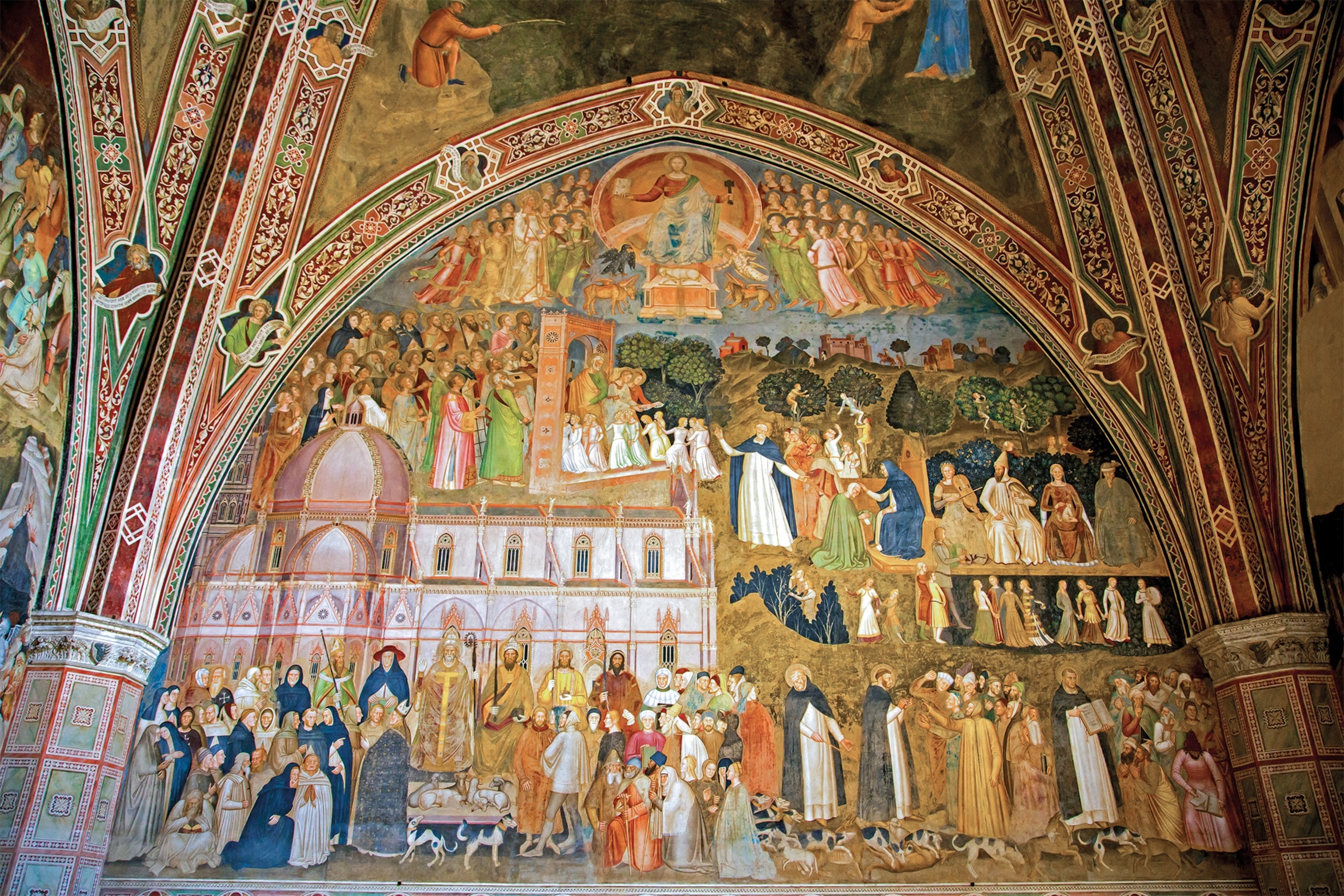
Sabotage and success
That same year a memorandum was drawn up listing the project’s structural principles. Brunelleschi confirmed the dome would have a double shell, and he included the dimensions of the structural rings. He stressed once again that he would build it without any external support, but exactly how remained unclear. Today no documentation survives that explicitly explains his engineering behind the dome. Much of what is known comes through observation and analysis of the finished work.

Early on in the construction of the dome, the disappointed Ghiberti and his faction used various stratagems to sabotage Brunelleschi’s proposal. They accused him of deviating from Fioravante’s original project and of committing structural errors in the building work. They even grew so desperate that they complained that the dome’s design made the cathedral interior too dark. None of these controversies succeeded in holding back the project, though. After the base of the dome reached the agreed-upon height in 1426, approval was granted for the work to continue without any supporting structures.
In 1429 cracks caused by the weight of the dome were beginning to appear in the cathedral, but Brunelleschi fixed them with reinforcements of iron and wood. Slowly, layer by layer, the dome rose, with no scaffolding necessary. Drawing on his experience, Brunelleschi designed hoists to facilitate the work. These involved innovative uses of cogs and shafts, and they were equipped with various speeds and a reversible gear. Years later, Brunelleschi’s devices would be studied and sketched by another brilliant Renaissance mind, Leonardo da Vinci.
Brunelleschi had a radical proposal: He would build the dome without using any support systems at all.
Through the 1430s, construction was hampered by cash flow problems, wage cuts, and a shortage of building materials. But Brunelleschi struggled on and in 1436 was vindicated. The magnificent dome was completed successfully, and Pope Eugenius IV consecrated the cathedral.
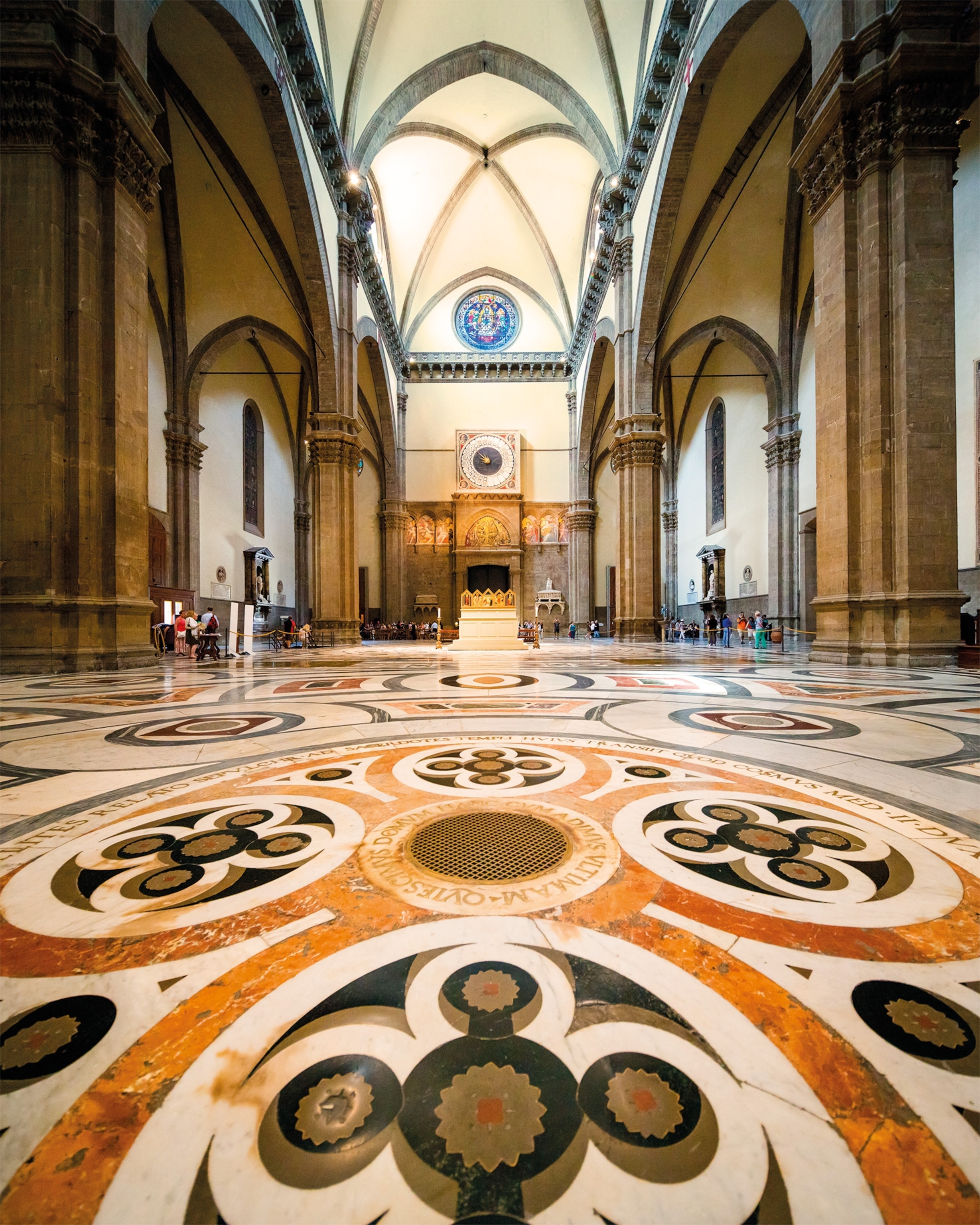
Brunelleschi, however, was not given carte blanche in designing the lantern that would finish the mighty work. Once again a competition was held, and once again Brunelleschi’s design won out over that of his rivals. Drawing on his brilliance as a sculptor, he carved a model from chestnut wood, but he died in 1446 before it could be placed. His design for the lantern was finally completed and placed over the dome in 1471, topped with a copper sphere—the Palla— designed by Andrea del Verrocchio.
In the 16th century work continued on the cathedral, including the spectacular interior decoration of the dome, a stunning rendering of the Last Judgment begun by Giorgio Vasari. The facade of the cathedral was left unfinished and was dismantled in 1587. Three centuries later, it was rebuilt in a neo-Gothic design that sought to revive the stylistic principles originally proposed by Giotto in the 14th century.
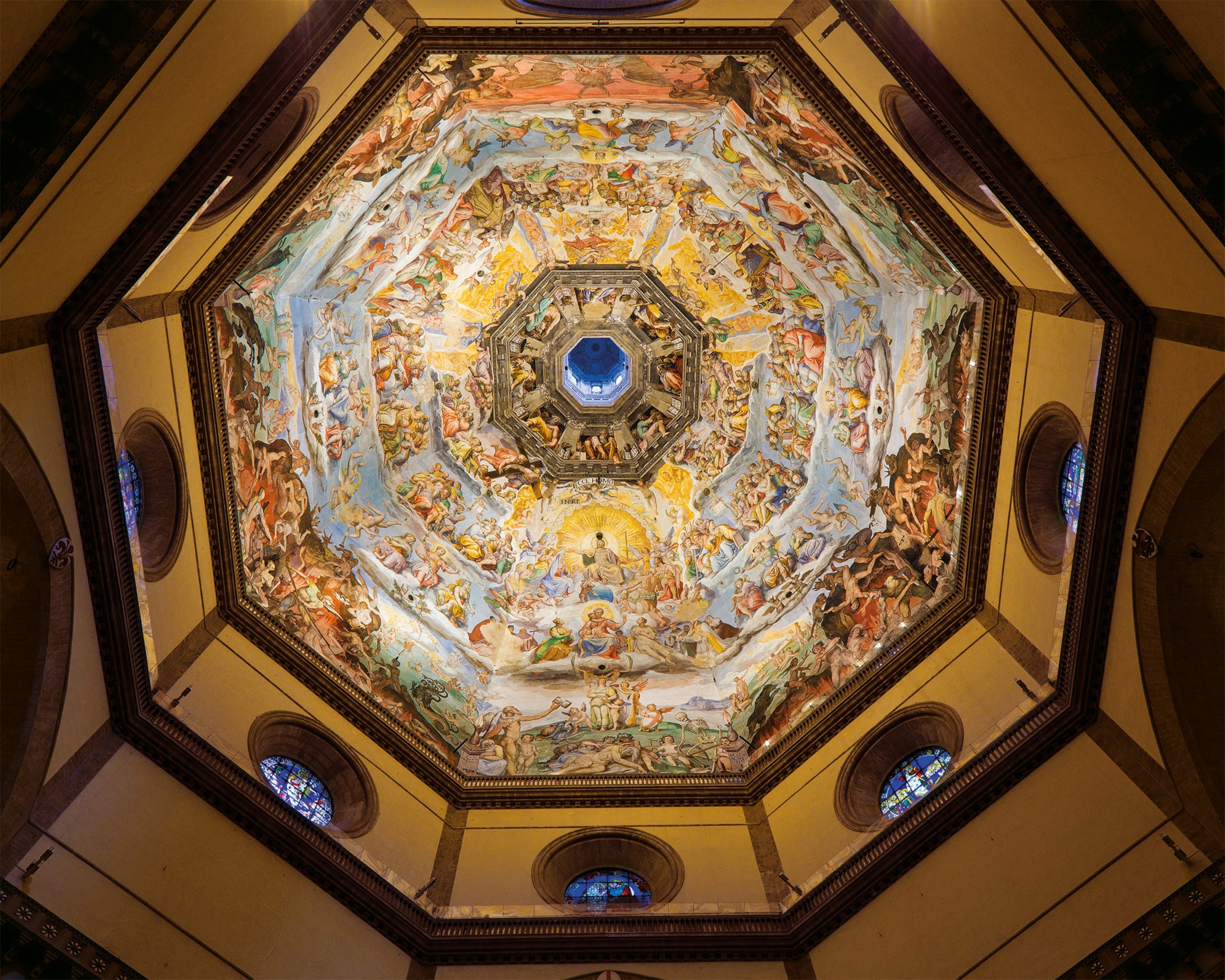
Fifteenth-century Italian architect and polymath Leon Battista Alberti marveled at Brunelleschi’s grand achievement:
Whoever would be envious enough to deny praise to the architect Pippo, seeing such a structure towering over the skies? It is wide enough to cast its shadow over all the Tuscan people, made as it is without any beam or wooden supports. It is hard to believe that this was done at this time when nothing of the kind was ever to be seen in antiquity.
According to historical tradition, Filippo Brunelleschi was buried under the cathedral. The tradition, it turned out, was true: In 1972 his tomb was found in the crypt, in the shadow of his own gravity-defying dome.


